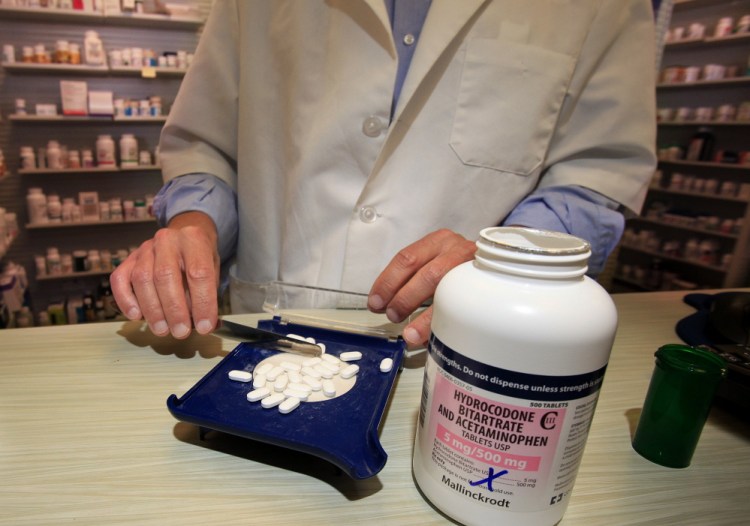Recognizing the role of prescription painkillers as a gateway drug to heroin, Maine lawmakers and medical professionals are working together to limit the prescription of opioids. As overdose deaths mount, this proposal is a major and welcome step toward helping reduce the number of Mainers at risk of opioid addiction. But the measure doesn’t – and can’t – address one of the issues underlying the drug epidemic: our nation’s inconsistent and inefficient system of pain care.
The Maine plan – the result of discussions involving the LePage administration and the Maine Medical Association – limits opioid prescriptions to seven days for acute pain and 30 days for chronic pain. Doctors would have to use the Prescription Monitoring Program, a state database that tracks prescriptions and is meant to keep patients from visiting multiple physicians to get the same drug. Training would also be required before physicians would be allowed to prescribe opioids.
These are all wise measures. Though MaineCare tightened rules on opioid prescriptions several years ago, doctors are still prescribing opioids at high rates to patients who have private insurance. After their prescriptions run out, those who’ve become addicted buy painkillers on the street, then turn to heroin because it’s far cheaper than the illicit pills.
In fact, four out of five new heroin users come to that drug after misusing prescription opioids, with consequences that are evident even to casual followers of current events in Maine: growing levels of addiction, overdose deaths and disrupted families.
The sad irony is that opioids aren’t even the best treatment for chronic pain. There’s little evidence to back up the effectiveness of long-term opioid therapy; meanwhile, studies show that patients who have been taking opioids for a long time report worse pain than those with similar conditions who weren’t prescribed opioids, leading pain physicians have told the Portland Press Herald.
The approach with the most evidence behind it, known as “interdisciplinary chronic pain management,” doesn’t leave out medication, but it doesn’t stop there, either. Based on an individual patient’s needs, this strategy can also include counseling, physical therapy, stress management, diet and exercise. It’s a model that’s been recommended by everyone from the Institute of Medicine to the Office of the Army Surgeon General.
But the U.S. lags far behind other Western countries in terms of access to interdisciplinary pain care. Unlike other countries, the U.S. doesn’t have a national policy on the treatment of chronic pain.
We also lack national health care, thus allowing private insurers’ reimbursement policies to dictate the course of treatment. Doctors have an incentive to deal with patients as quickly as possible. And it doesn’t take nearly as long to write a prescription for a painkiller as it does to listen to a patient talk about the personal issues that might be aggravating their physical problems.
So it’s good news that Maine is trying to reduce the number of prescription opioids flowing through the state. But opioid addiction grows out of policies that are beyond our control here. To truly make a difference, we must push for change not only in Augusta but also in Washington.
Copy the Story LinkSend questions/comments to the editors.



Success. Please wait for the page to reload. If the page does not reload within 5 seconds, please refresh the page.
Enter your email and password to access comments.
Hi, to comment on stories you must . This profile is in addition to your subscription and website login.
Already have a commenting profile? .
Invalid username/password.
Please check your email to confirm and complete your registration.
Only subscribers are eligible to post comments. Please subscribe or login first for digital access. Here’s why.
Use the form below to reset your password. When you've submitted your account email, we will send an email with a reset code.